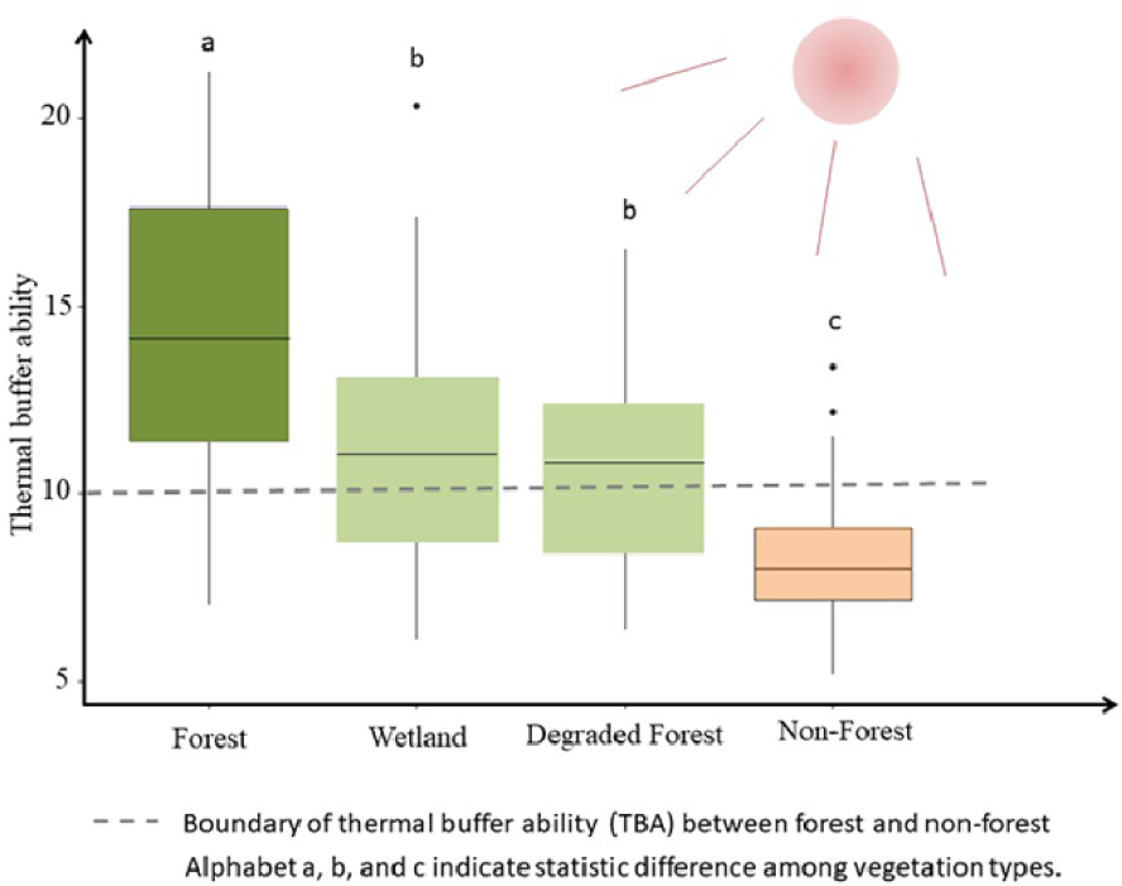The contrasting structure and energy partitioning of different vegetation types moderate canopy surface temperature, and thus vegetation types may differ in their buffer ability toward temperature fluctuations. To better understand the interaction between vegetation and climate around the global, it is necessary to study the pattern of Thermal Buffer Ability (TBA, i.e. resistance to environmental thermal force) and its impact across biomes.
In a study published in Agricultural and Forest Meteorology, researchers from Xishuangbanna Tropical Botanical Garden (XTBG) devised a new approach to calculate TBA that can easily be applied using commonly available data. They calculated TBA by using the reciprocal of the rate of increase of outgoing longwave radiation over the incoming shortwave radiation.
In that way, one two-component radiometer can be used to measure all the variables needed in TBA simultaneously, and TBA is independent of radiation environment.
With the method, the researchers compared TBA of ten vegetation types with contrasting structures, e.g. from grasslands to forests, using data from 133 sites globally. TBA ranged from 5.2 to 21.2 across these sites and biomes.
They found that forests generally had higher thermal buffer ability (TBA) than non-forests. Forests and wetlands buffer thermal fluctuation better than non-forests (grasslands, savannas, and croplands), and the TBA boundary between forests and non-forests was typically around 10.
Moreover, mature forests were more resistant to environmental temperature change than disturbed and young plantations. Canopy height was the primary impact factor influencing TBA of forests, while the TBA of grasslands and savannas were mainly determined by energy partition, water availability, and carbon sequestration rates.
“Our study demonstrates that forest degradation and deforestation reduce TBA. Protecting mature forests, both at high and low latitudes, is critical to mitigate thermal fluctuation under extreme events,” said Dr. LIN Hua, first author of the study.
Contact
LIN Hua Ph.D
Key Laboratory of Tropical Forest Ecology, Xishuangbanna Tropical Botanical Garden, Chinese Academy of Sciences, Mengla, Yunnan 666303, China
E-mail: lh@xtbg.ac.cn
Forests buffer thermal fluctuation better than non-forests (Image by LIN Hua)

